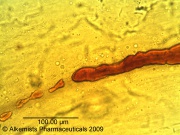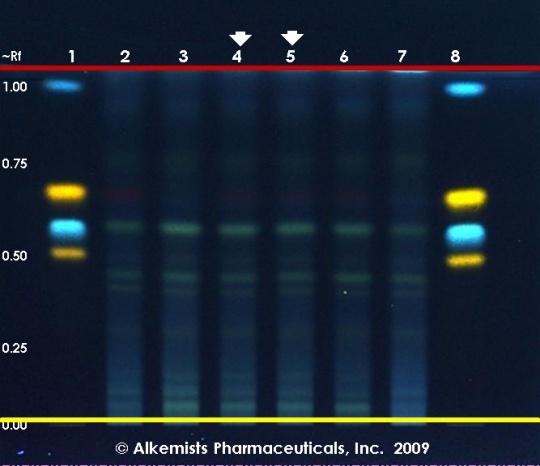Carthamus tinctorius (flower)
(→information from USD 1918) |
(Nomenclature updated) |
||
| Line 1: | Line 1: | ||
| − | = | + | =Nomenclature= |
| + | |||
| + | {{nomenclature | binomial=Carthamus tinctorius | ||
| + | |authority=L. | ||
| + | |family=Asteraceae | ||
| + | |scn=safflower | ||
| + | |syn= | ||
| + | |ayurvedic=kusumbha | ||
| + | |pinyin=hong hua (flower) | ||
| + | |aka= | ||
| + | |notes= }} | ||
| + | |||
=Macroscopic Entries= | =Macroscopic Entries= | ||
{{Macroscopy | source=United States Dispensatory (1918) | {{Macroscopy | source=United States Dispensatory (1918) | ||
Revision as of 17:52, 13 March 2014
Contents |
Nomenclature
Carthamus tinctorius L. Asteraceae
Standardized common name (English): safflower
Ayurvedic name(s): kusumbha
Pinyin name(s): hong hua (flower)
Macroscopic Entries
|
Microscopic Entries
|
HPTLC Entries
|
Safflower (flower) (Carthamus tinctorius) Lane Assignments Lanes, from left to right (Track, Volume, Sample):
Reference materials used here have been authenticated by macroscopic, microscopic &/or TLC studies according to the reference source cited below held at Alkemists Laboratories, Costa Mesa, CA. Stationary Phase Silica gel 60, F254, 10 x 10 cm HPTLC plates Mobile Phase ethyl acetate: AcCOOH: HCOOH: H2O [10/1.1/1.1/2.4] Sample Preparation Method 0.3 g + 3 ml CH3OH sonicated + heated @ 50° C ~ 1 hr Detection Method Natural Product Reagent + PEG -> UV 365 nm Reference see Adapted from Plant Drug Analysis, Wagner, H., 1996
|
Other Points of Interest
Cite error: <ref> tags exist, but no <references/> tag was found


